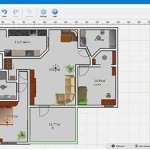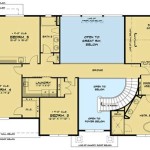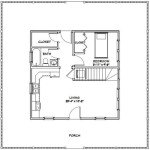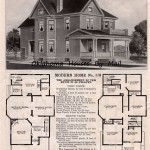House plans with garages are architectural designs that incorporate a dedicated space for parking vehicles within the structure of a residential building. These plans offer the convenience of having vehicles protected from the elements and intruders, while also providing additional storage or workspace.
Garages are an essential feature for many homeowners, providing a safe and secure place to park their cars, store tools and equipment, or pursue hobbies. They can also add value to a home, making them a desirable feature for potential buyers.
In this article, we will explore the different types of house plans with garages, their advantages and disadvantages, and provide tips for choosing the right plan for your needs.
When considering house plans with garages, there are several key points to keep in mind:
- Size and number of vehicles
- Attached or detached garage
- Garage door type and location
- Storage and workspace needs
- Style and aesthetics
- Building codes and regulations
- Cost and budget
- Energy efficiency
- Resale value
- Future expansion or modifications
By carefully considering these factors, you can choose a house plan with a garage that meets your specific needs and preferences.
Size and number of vehicles
The size and number of vehicles you own or plan to own will have a significant impact on the size of garage you need. A single-car garage is typically 12 feet wide by 20 feet deep, while a two-car garage is typically 20 feet wide by 20 feet deep. If you have a large vehicle, such as a truck or SUV, you may need a wider or deeper garage.
If you have more than two vehicles, you may need a three-car garage or even a four-car garage. Three-car garages are typically 24 feet wide by 20 feet deep, while four-car garages are typically 32 feet wide by 20 feet deep. You may also want to consider a tandem garage, which is a long and narrow garage that can accommodate two or more vehicles parked one behind the other.
In addition to the size and number of vehicles, you should also consider how you will use your garage. If you plan to use your garage for storage or as a workspace, you will need a larger garage with more storage space and electrical outlets.
Finally, you should keep in mind the size of your property and the overall style of your home when choosing a garage size. A large garage on a small property can look out of place, and a small garage on a large property can look inadequate. It is important to choose a garage size that is proportional to the size and style of your home.
Attached or detached garage
Attached garages are connected to the main house by a common wall, while detached garages are standalone structures. Both types of garages have their own advantages and disadvantages.
**Attached garages**
- **Advantages:**
– More convenient, especially in bad weather
– Can provide additional storage space for the home
– Can increase the value of the home
– Can be more energy efficient
- **Disadvantages:**
– Can be more expensive to build
– Can take away from the curb appeal of the home
– Can be more difficult to access if the driveway is narrow or sloped
**Detached garages**
- **Advantages:**
– More affordable to build
– Can be placed anywhere on the property
– Can be used for a variety of purposes, such as a workshop or storage shed
– Can be designed to match the style of the home or to create a different look
- **Disadvantages:**
– Less convenient, especially in bad weather
– Can take up more space on the property
– Can be more difficult to secure
Ultimately, the best type of garage for you will depend on your individual needs and preferences.
If you are looking for a convenient and energy-efficient garage that can add value to your home, an attached garage is a good option. If you are looking for a more affordable and versatile garage that can be used for a variety of purposes, a detached garage is a good option.
Garage door type and location
The type and location of your garage door will impact the convenience, security, and curb appeal of your home.
- **Type of garage door**
There are several different types of garage doors to choose from, including:
- **Sectional garage doors:** Sectional garage doors are made up of several panels that are hinged together. They open by sliding up and down on tracks. Sectional garage doors are the most popular type of garage door because they are relatively affordable, easy to install, and durable.
- **Roll-up garage doors:** Roll-up garage doors are made of a single sheet of metal or fabric that rolls up and down on a drum. Roll-up garage doors are less expensive than sectional garage doors, but they are also less durable and secure.
- **Tilt-up garage doors:** Tilt-up garage doors are made of a single panel that tilts up and down on hinges. Tilt-up garage doors are less common than sectional garage doors and roll-up garage doors, but they are more durable and secure.
- **Side-hinged garage doors:** Side-hinged garage doors are made of two or more panels that swing open like a door. Side-hinged garage doors are the most traditional type of garage door, but they are also the most expensive and difficult to install.
The type of garage door you choose will depend on your budget, security needs, and personal preferences.
- Location of garage door
The location of your garage door will impact the convenience and curb appeal of your home. The most common location for a garage door is on the front of the house. However, you may also choose to place your garage door on the side or back of the house.
If you place your garage door on the front of the house, it will be more convenient to access your garage. However, it may also take away from the curb appeal of your home. If you place your garage door on the side or back of the house, it will be less convenient to access your garage. However, it may also improve the curb appeal of your home.
Ultimately, the location of your garage door is a personal preference. You should choose the location that best meets your needs and preferences.
Storage and workspace needs
If you plan to use your garage for storage or as a workspace, you will need to consider the following:
- The amount of storage space you need
Consider what you will be storing in your garage, such as tools, equipment, sports gear, or seasonal items. You will also need to decide how you want to store your items, such as on shelves, in cabinets, or on pegboards. - The type of workspace you need
If you plan to use your garage as a workspace, you will need to decide what type of work you will be doing and what type of equipment you will need. You will also need to consider the amount of space you will need for your workspace. - The location of your storage and workspace
You will need to decide where you want to locate your storage and workspace in your garage. You will also need to consider how you will access your storage and workspace. - The lighting and ventilation in your garage
If you plan to use your garage for storage or as a workspace, you will need to make sure that it is well-lit and ventilated. This will help to keep your belongings safe and dry, and it will make it more pleasant to work in your garage.
By carefully considering your storage and workspace needs, you can design a garage that meets your specific needs and preferences.
Style and aesthetics
The style and aesthetics of your garage should complement the style of your home. If you have a traditional home, you may want to choose a garage door with a classic design. If you have a modern home, you may want to choose a garage door with a more contemporary design.
- Garage door style
The style of your garage door will have a significant impact on the overall look of your home. There are many different styles of garage doors to choose from, including traditional, contemporary, and rustic. You should choose a garage door style that complements the style of your home.
- Garage door material
The material of your garage door will also affect the look of your home. Garage doors can be made from a variety of materials, including wood, steel, aluminum, and fiberglass. You should choose a garage door material that is durable and weather-resistant.
- Garage door color
The color of your garage door can also affect the look of your home. You should choose a garage door color that complements the color of your home. You may also want to consider the color of your driveway and landscaping when choosing a garage door color.
- Garage door hardware
The hardware on your garage door can also add to the overall look of your home. You should choose garage door hardware that is both stylish and functional.
By carefully considering the style and aesthetics of your garage, you can choose a garage that complements the style of your home and enhances the overall curb appeal of your property.
Building codes and regulations
Building codes and regulations are important considerations when designing and constructing a house with a garage. These codes and regulations are in place to ensure the safety and structural integrity of buildings, and they can vary from municipality to municipality.
- Setbacks
Setbacks are the minimum distances that a building must be set back from property lines and other structures. These setbacks are in place to ensure that buildings are not built too close to each other and to provide access for emergency vehicles.
- Garage door height and width
Building codes and regulations may specify the minimum height and width of garage doors. These requirements are in place to ensure that vehicles can safely enter and exit the garage.
- Fire safety
Building codes and regulations may also include fire safety requirements for garages. These requirements may include the installation of smoke detectors and fire extinguishers, as well as the use of fire-resistant materials in the construction of the garage.
- Energy efficiency
Building codes and regulations may also include energy efficiency requirements for garages. These requirements may include the installation of insulated garage doors and windows, as well as the use of energy-efficient lighting and appliances.
It is important to be aware of the building codes and regulations in your area before designing and constructing a house with a garage. By following these codes and regulations, you can help to ensure the safety and structural integrity of your home.
Cost and budget
The cost of building a house with a garage will vary depending on a number of factors, including the size of the garage, the type of garage door, the materials used, and the labor costs in your area.
As a general rule of thumb, you can expect to pay between $10,000 and $30,000 to build a detached garage. The cost of an attached garage will be slightly higher, typically between $15,000 and $40,000.
The type of garage door you choose will also affect the cost of your garage. A basic steel garage door will typically cost between $500 and $1,500, while a more elaborate wooden garage door can cost upwards of $5,000.
The materials used to construct your garage will also affect the cost. A garage built with brick or stone will be more expensive than a garage built with vinyl or aluminum siding.
Finally, the labor costs in your area will also affect the cost of your garage. Labor costs can vary significantly from one area to another.
Before you start building a garage, it is important to develop a budget and to get bids from several contractors. This will help you to avoid any unexpected costs down the road.
Energy efficiency
Energy efficiency is an important consideration when designing and constructing a house with a garage. A well-insulated garage can help to reduce your energy costs and make your home more comfortable year-round.
There are a number of ways to improve the energy efficiency of your garage, including:
- Insulating the garage door
Garage doors are a major source of heat loss in a garage. By insulating your garage door, you can help to keep the heat in during the winter and the cool air in during the summer.
- Insulating the garage walls and ceiling
The walls and ceiling of your garage should also be insulated to help reduce heat loss. You can use a variety of insulation materials, such as fiberglass batts, cellulose, or spray foam.
- Installing energy-efficient lighting
Lighting accounts for a significant portion of energy use in a garage. By installing energy-efficient lighting, such as LED lights, you can help to reduce your energy costs.
- Using solar panels
Solar panels can be installed on the roof of your garage to generate electricity. This electricity can be used to power your garage lights, tools, and appliances.
By following these tips, you can improve the energy efficiency of your garage and make your home more comfortable year-round.
Resale value
The resale value of a house with a garage is typically higher than the resale value of a house without a garage. This is because garages are seen as a desirable feature by many homebuyers. A garage can provide a safe and secure place to park vehicles, store tools and equipment, or pursue hobbies. It can also add to the overall curb appeal of a home.
The size of the garage can also affect the resale value of a home. A larger garage is typically more desirable than a smaller garage, especially in areas where there is limited off-street parking. A two-car garage is typically the minimum size that is desirable for most homebuyers. However, a three-car garage or even a four-car garage can add even more value to a home, especially in areas where there are multiple vehicles per household.
The type of garage door can also affect the resale value of a home. A more expensive and durable garage door, such as a steel or aluminum garage door, will typically add more value to a home than a less expensive and less durable garage door, such as a vinyl or wood garage door.
Finally, the location of the garage can also affect the resale value of a home. A garage that is attached to the house is typically more desirable than a detached garage. This is because an attached garage is more convenient and provides better protection from the elements.
Future expansion or modifications
When designing your house with a garage, it is important to consider future expansion or modifications. This will help you to avoid costly changes down the road.
- Adding a room above the garage
If you need more space, you can add a room above the garage. This is a great way to add extra bedrooms, a bathroom, or a home office. However, you will need to make sure that the foundation of your garage is strong enough to support the additional weight.
- Expanding the garage
If you need more space for your vehicles or storage, you can expand the garage. This can be done by adding an extension to the front, side, or back of the garage. However, you will need to make sure that you have enough space on your property to accommodate the expansion.
- Converting the garage into a living space
If you need more living space, you can convert the garage into a living space. This can be done by adding insulation, drywall, and flooring. However, you will need to make sure that the garage is properly ventilated and that it meets all building codes.
- Adding a garage door opener
If you want to make your garage more convenient, you can add a garage door opener. This will allow you to open and close the garage door with the touch of a button. However, you will need to make sure that the garage door opener is properly installed and maintained.
By considering future expansion or modifications, you can design a garage that meets your current and future needs.










Related Posts








